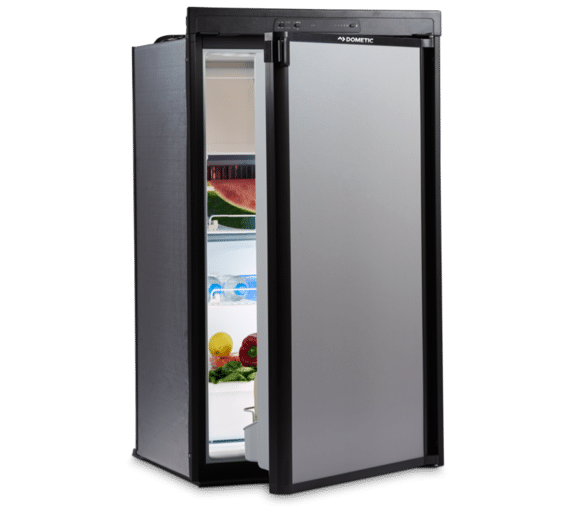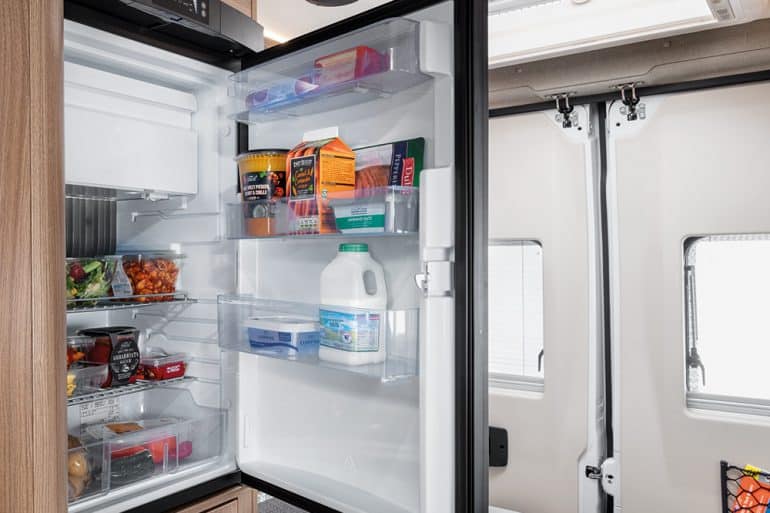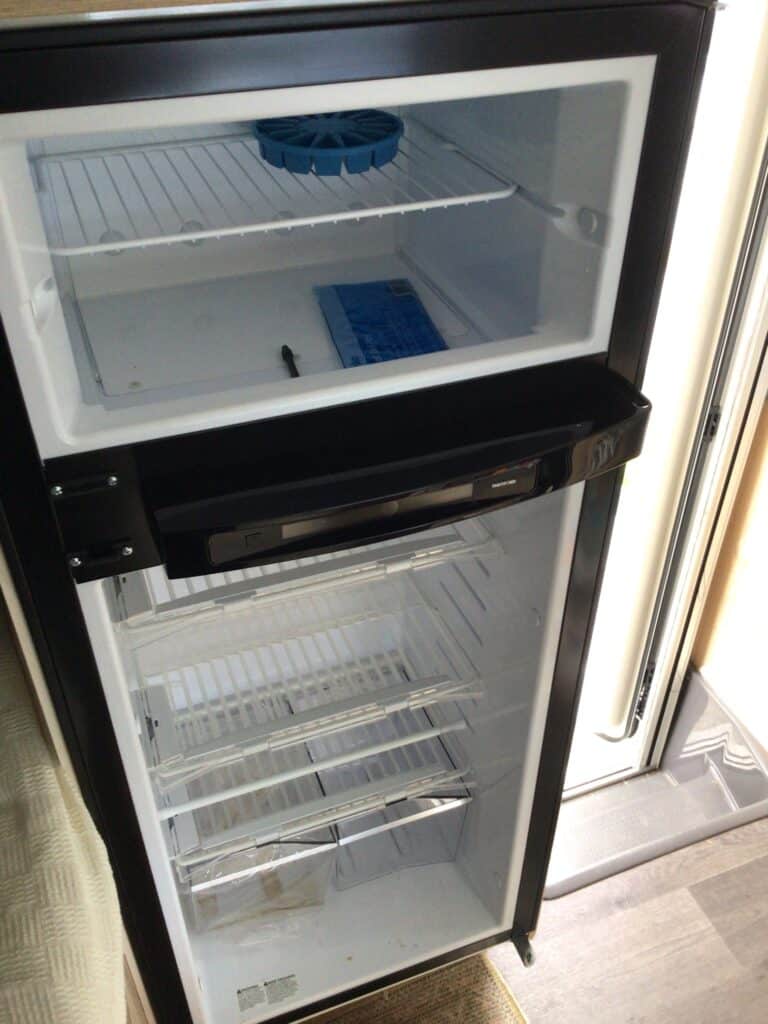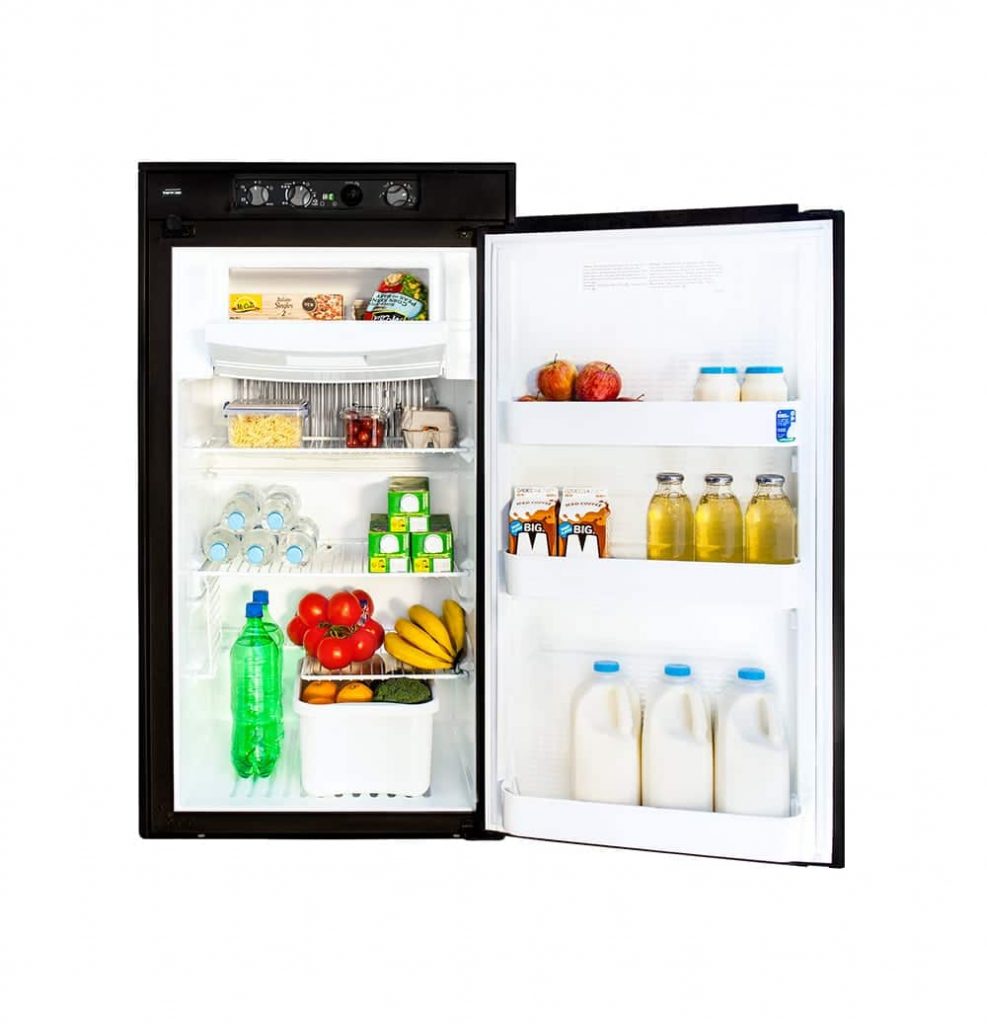Mastering Travel Caravan Refrigerators Care with AllBrand Caravan Services
AllBrand Caravan Services, Brisbane’s caravan specialists, are here to equip you with the knowledge to keep your travel caravan refrigerators frosty and your Brisbane adventures perfectly chilled.
Travel Fridges: Not Your Kitchen Buddies:
Unlike their household cousins, travel fridges work through a unique absorption system. Using heat, not compressors, they keep your food and drinks cool wherever your adventures take you. But this special technology requires special care:
- Heat Hurts: Overheating cooks the fridge’s performance. Park in the shade, utilise fans, and leave proper ventilation space above the unit.
- Level is Key: Don’t tilt your fridge! Unevenness clogs its “cooling arteries,” reducing efficiency and potentially damaging the system.
- Open Wisely: Minimise fridge opens in hot weather and stock an esky for frequently used items.
- Cool Surroundings: The cooler the air around your fridge, the happier it is. Park strategically and embrace natural shade.
Power Play:
- 12V Ready: Ensure your rig has a heavy-duty auxiliary power supply to handle your fridge’s 12V needs. AllBrand can help!
- Patience is a Virtue: Pre-chill at home before hitting the road, and give it time to reach its cool cruising temperature.


Fresher Food, Longer Fun:
- Condensation Catcher: Avoid soggy messes and overworked fridges. Dry containers before storing them inside.
- Seal the Deal: Worn door seals leak precious coolness. We at AllBrand can replace them or help you revive them with a hairdryer trick.


Fridge Fit for Adventure:
Score your fridge installation with this AllBrand Fridge Fitness Checklist:
[Checklist: Each “yes” is 1 point]
- 4″+ between fridge top and bench
- Effective heat deflector plate
- Side insulation eliminates cabinet gaps
- Bottom vent higher than fridge top
- Openable vent doors
- Electrolux flu kit installed
- Cooling fan installed
- Spirit level verifies perfect fridge balance
- Fridge awning provides extra shade
0-3 Points: Need an AllBrand fridge makeover! Visit us or call today for expert upgrades and repairs. 4-7 Points: You’re almost there! Let AllBrand fine-tune your fridge setup for peak performance. 8-9 Points: Congratulations! Your fridge is Brisbane adventure-ready. Now grab your esky and hit the road!
AllBrand: Your Fridge Freshness Partner:
Beyond fridge expertise, AllBrand offers:
- Years of Reliable Servicing: We’ve kept Brisbane caravans cool and comfortable for decades, ensuring your peace of mind and safety every mile.
- Safety First, Always: From top-notch repairs to expert advice, we prioritize your well-being on every journey.
- Brisbane Know-How: We understand the unique challenges of Brisbane’s terrain and climate, providing solutions tailored to your local adventures.
- Transparent & Trustworthy: No hidden costs or fridge blues. We keep you informed and empowered throughout the process.
Embrace Brisbane’s Adventures, Chilled to Perfection:
With AllBrand Caravan Services, your travel fridge becomes a reliable partner, not a source of stress. Visit us today, and let’s turn your Brisbane caravan dreams into perfectly chilled adventures!
What You Should Know About Fridge-Related Repairs for Your Motorhome:
FAQs
A travel refrigerator, also known as a portable refrigerator or car fridge, is a compact appliance designed to keep food and beverages cool or frozen while on the go. It is specifically designed for travel, camping, road trips, RVs, boats, and other outdoor activities where access to a traditional refrigerator may be limited.
Travel refrigerators typically use a combination of a compressor, refrigerant, and insulation to cool the interior compartment. The compressor circulates the refrigerant, which absorbs heat from the interior and releases it outside. This process maintains a lower temperature inside the refrigerator, keeping the contents cool.
Travel refrigerators can be powered by various sources, including:
- 12-volt DC power: They can be directly connected to the vehicle’s cigarette lighter socket or auxiliary power outlet.
- 110-240-volt AC power: Some models come with an AC adapter, allowing them to be plugged into standard wall outlets.
- Dual power: Certain models offer both 12-volt DC and 110-240-volt AC compatibility, providing flexibility for different power sources.
Travel refrigerators come in a range of sizes to suit different needs. Common sizes include 15 to 45 liters (approximately 0.5 to 1.6 cubic feet). Smaller sizes are ideal for personal use or short trips, while larger sizes can accommodate more food and beverages for extended periods.
Yes, many travel refrigerators have a freezing function or a temperature range that allows them to freeze items. However, it’s important to check the specifications of the specific model you’re interested in to ensure it has the freezing capabilities you need.
The noise level of travel refrigerators can vary depending on the model and manufacturer. Some units operate quietly, while others may produce a low level of noise due to the compressor and fan operation. It’s a good idea to read customer reviews and specifications to get an idea of the noise level before purchasing.
Most travel refrigerators are designed to operate continuously as long as they have a power source. However, it’s important to consider the power draw and the capacity of your power source, especially if you’re using the refrigerator in a vehicle or a battery-powered setup. Running the refrigerator for extended periods without the engine running may drain the vehicle’s battery.